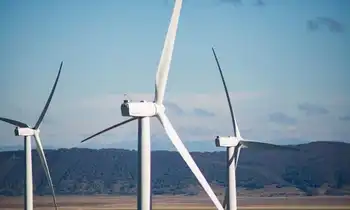Cordless tools become more refined
By Construction Distribution
Substation Relay Protection Training
Our customized live online or in‑person group training can be delivered to your staff at your location.

- Live Online
- 12 hours Instructor-led
- Group Training Available
For ladder and roof applications, sites that don't have electricity or large commercial projects where power cords can be trip hazards, these innovations gave contractors the ability to complete their jobs safely and hassle-free.
Over the years, battery technologies evolved, putting more power and longer run-times in the contractor's hands. Tool manufacturers experimented with different voltage platforms and expanded the number of cordless tools available to contractors.
In 2005, a revolutionary advancement was introduced with the launch of lithium ion. This battery technology opened up a host of opportunities for manufacturers including increased charging cycles and lighter battery cells. Today, you'll find most manufacturers focusing their efforts on improving upon their lithium ion tool lines.
"If you want to compare lithium ion to other technologies, it's almost like the change from VHS to DVD, or from a Walkman to an iPod," says Paul Fry, director of M12 cordless marketing with Milwaukee Tools. "It's a very aggressive, defined change in the marketplace."
One of the greatest opportunities lithium ion brought to the power tools market was the ability to pack more power in a smaller package. The average nickel cadmium cell was about 1.2 volts, whereas the average lithium ion cell is about 3.6 volts.
"Lithium ion takes less cells to do the same amount of work as it did before," Fry says. "We can offer consumers the same power they had in their old tools, but in a much smaller package. Or we can offer much more power in a package size and weight similar to the tools they had before."
This downsizing of tools is driving user trends in the industry. "Back in the 1990s, you had what I call the 'Tim the Tool Man Taylor Effect.' Everyone wanted a beefy, macho tool - the biggest on the jobsite. With the introduction of lithium ion, people started wising up to the reality that they don't need monster power tools to get their applications done," says Jason McNeil, product manager with DeWalt Power Tools. "We're seeing tools and batteries shrink in size and we're also seeing users pick a tool that fits their work with less of that overkill, or getting the biggest, beefiest tool on the jobsite."
The past decade has seen numerous voltage platforms throughout the industry. But in recent years manufactures have gravitated to a smaller number of platforms, clearing up a lot of potential confusion for distributors and end users.
In general you will see tools fit into three general categories: the 18-volt line, the subcompact line, and a line of larger tools.
"After 18 volt lithium ion hit the market in 2005 everyone raced up the voltage scale, all the way to 36 volt," says Ethan Haughawout, product manager for cordless tools with Makita. "But now the focus is moving back to 18 volt, where we focused all along."
Makita offers 36 tools in its 18-volt lithium ion line. They still offer nickel cadmium and alkaline hydride options, but since 2005 their product development has been lithium ion related.
Some manufacturers offer a compact version of their 18-volt platforms, geared toward contractors who prefer a lighter weight tool and aren't as concerned about run time. Makita offers its full-size LXT 18-volt lithium ion line and a compact 18-volt lithium ion line.
"The cells are the same size, but the LXT has twice as many cells as the compact battery. The compact battery charges in 15 minutes, while the LXT charges in 30 minutes," Haughawout explains. "The compact product doesn't run as long but it weighs less and charges faster."
DeWalt recently introduced its new 18-volt Compact Lithium Ion battery. Like all of the company's batteries on the market today, this new battery is backwards compatible with all the cordless tools the company has sold since 1996. McNeil says the 18-volt Compact Lithium Ion platform was designed with a certain type of contractor in mind.
"They'll be able to use it where ergonomics are important, like overhead applications, ladder applications and applications where you don't need an extended run time," he says.
Another trend is the growing subcompact category - 10.8- and 12-volt platforms. Fry says with Milwaukee's M12 subcompact line, they're taking tools from "jobsite portable" to "toolbelt portable."
"Part of what we're doing is expanding the boundaries of what cordless means," he says. "Lithium ion allows us to put a battery pack where we never would have before because it would have been too large and too cumbersome."
Across the industry you'll see subcompact cordless tools like cordless screwdrivers and saws.
On the other end of the tool spectrum, you'll find manufacturers have gravitated toward larger battery platforms like 28- and 36-volt tools, such as Milwaukee's V28 lithium ion line.
"V28 is all about delivering the power of a corded solution without the cord," Fry says. "There are larger tools like full-size band saws, full-size right-angle drills and rotary hammers."
Charging a battery when it's too hot or too cold, or under- or over-charging it, can take life off a pack. In order to optimize the number of charges a battery pack can endure, most manufacturers offer some degree of electronic monitoring in their battery charging docks.
These systems vary depending on the manufacture, but generally charging stations monitor battery temperature to ensure the optimal temperature range for charging and ensuring proper voltage to the cells.
"You're treating the cells better on each charge during charging and keeping the cells better balanced. You can get more recharges out of a lithium ion pack than a nickel-based battery," McNeil says. "Our XRP lithium ion batteries are rated about 2,000 cycles and our comparable nickel cadmium battery will run about 800 cycles."
That's great news in the not-so-eco-friendly field of rechargeable battery chemistry. In addition to increased battery cycles, lithium ion batteries require less cells to do the same amount of work as nickel-based chemistries. Several manufacturers have gone one step further for the environment by getting their charging stations approved through the Energy Star program, meaning those charging stations with the Energy Star approval use a significantly less amount of energy to recharge their batteries.
From a distributor's standpoint, cordless power tool platforms offer a unique sales opportunity. Unlike corded tools, which are sold and work as single units with a tool and power source, battery-operated tools can work interchangeably within a brand from battery to battery. If a contractor runs out of battery power with one piece of equipment, he can grab a battery off another tool and use that instead of waiting for a charge.
The more tools a manufacturer offers in a tool series, the more opportunities a distributor has to show customers how they can build their cordless platforms. Manufactures offer even more flexibility for distributors to push cordless platforms by offering contractors the ability to buy tools in a kit (typically the tool, two batteries, a charger and a case) or just a tool.
Fry says all the recent improvements and features on battery-operated tools is great for distributors. "There are a lot of new, exciting products on the market distributors can offer to users. As tough as it is in this market, it helps to have something to talk about. Now is not a good time to show customers an incremental improvement on what you have. You want to show a dramatic change to have them step forward and make a purchase."
Rechargeable batteries contain toxic heavy metals that are harmless when a battery is being used but can pose a threat to people and the environment without proper disposal. Many states have rules against throwing away some types of rechargeable batteries. In California and New York it is against the law for consumers to put any recyclable batteries in their trash; it's also required that retailers in those states who sell rechargeable batteries offer a rechargeable battery recycling option for their customers.
The Rechargeable Battery Recycling Corporation (RBRC) makes it easy for distributors throughout the United States and Canada to offer a recycling option for their customers' rechargeable power tool batteries. Any retail outlet can become a drop-off location at no charge. The RBRC takes any rechargeable battery from any manufacturer and cell phones.
The RBRC is funded by the manufacturers of power tools, electronics, cell phones and other devices that use rechargeable batteries. This non-profit group organizes the collection of recyclable batteries and cell phones. These items are then recycled into new batteries or steel products, and old cell phones are refurbished and resold. None of the environmentally harmful parts of the batteries end up in landfills.
To become a recycling location for the RBRC, visit their website at Call2Recycle.org and click on "Join Our Program." The RBRC will send you a recycling box, bags for the batteries, and safety instructions and handling guidelines. Shipping is prepaid by the RBRC. The RBRC will list your business as a drop-off location on its website and through its toll-free help numbers. The RBRC also makes it easy for you to promote your business as a drop-off location and participant in the recycling program through downloadable and customizable posters and web banners.











